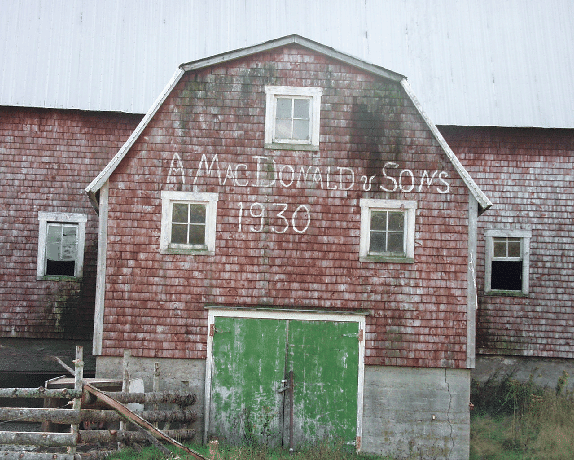
|
Much of this paper was written during a vacation trip my wife and I took to Cape Breton, Nova Scotia. Cape Breton is an extraordinary place, the most unspoiled place that I have experienced in as long as I can remember. The population density (of people) is very low. The opposite is true of the density of the moose, deer, bear, bobcat, fox, wolf, and eagle populations. The winters are long and hard. There is very little development (see Figure 5 for a photograph of the Cape Breton McDonald's), and getting there involves a lot of driving. There is no Cape Breton International Airport! I'd like to close this paper by sharing some things with you from this amazing place.
We stayed in Ingonish, at the Keltic Lodge, on the eastern coast of Cape Breton. There's a little town, offering just the barest essentials. Making a living here is not easy. In fact, the Keltic Lodge (in the Cape Breton Highlands National Park, buildings owned by the province of Nova Scotia and the land by Canada) is the largest employer. Recently, a proposal was floated to build a shopping mall on the Cabot Trail (the road that follows the coastline of Cape Breton) in Ingonish. It was voted down by the residents. I think this is a striking example of courageous defense of solid values. The mall would have brought jobs, but would also have brought blight and ugliness to an area of extraordinary beauty. It could easily have opened the floodgates of development, as well. These simple, good people understood all this, and rejected it and the money it would have brought them.
My wife and I took a walk on a trail from the Keltic Lodge out to a rocky point, called Middle Head, that protrudes into the Atlantic Ocean. Along the way, we encountered a placard, a photograph of which you will find in Figure 6. It was interesting and moving to find these words here, because most of this paper was already written prior to taking this walk, and this placard summarizes what I've been writing about better than I ever could.
The culmination of this walk is one of the ends of the earth, a truly overwhelming sight. We spent about 1/2 an hour there, watching the seals, the birds, and the ocean. Both of us found it hard to leave. Figures 7 and 8 don't begin to do justice to what we saw, but they are better than trying to describe it with words. Figure 9 is a photograph of a placard located on this site. It is the perfect conclusion to this paper.